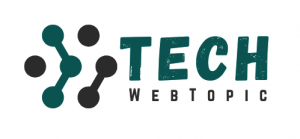Determining how much your organization should be spending on cybersecurity is a bit of a task. Ultimately, there are several variables you should consider when budgeting for your cyber security needs. Each may have a different role, but one thing you must remember is trust. Your clients and customers trust you with their data. Whether it’s their billing information or personally identifiable information, they trust you to keep it secure. It is your job to do everything in your power, not to break that trust. But, how do you know what to spend money on? How do you know if you’re spending too much or too little on keeping your digital infrastructure secure?
To be honest, it varies pretty substantially from business to business; however, there are five major factors you should consider when evaluating your cyber security spending. Let’s dive into them.
The Number of Devices
First, you need to determine the number of endpoints, or devices you need to protect. Additionally, you should consider servers as well. You will want to be sure you are purchasing enough license keys to keep all organization’s devices secure and reduce the threat of cyber risk exposure.
Additionally, you may want to consider reevaluating the bring-your-own-device (BYOD) policy. Allowing employees to connect their personal devices to the corporate network can open a gaping hole in the security of your digital assets. If it is in the budget, it would be wise to issue employer-issued devices instead of allowing for personal devices to connect to the company’s network. This allows the organization to ensure cyber security solutions are installed, and updated timely to reduce the risk of malicious intent spreading throughout the organization’s network.
Data Being Stored
Next, you will want to consider what data is being stored by the organization. Is this information personally identifiable information? Are you storing client payment data? What about customer addresses or proprietary business data?
The level of information you store will determine the level of encryption you may need to implement into your security protocol. You do not want confidential information stored in plain text. Alternatively, you should have data encryption in place while the data is both at rest, as well as in-transit.
Your IT Team
Next, consider the size of your IT team. What can they manage? Building out a massive cyber security stack, with a substantial budget may better your security posture, but do you have the staff to deploy it? What about managing it on a daily basis? Also, what is the IT team using now to address the cyber security threat landscape? What do they like about it? What are the current pain points?
To really determine the bandwidth of your IT staff, and to better understand the existing processes, collaboratively conduct a strategic technology plan. Understand the processes in place, why they’re in place, and who is responsible for them. Then, better understand how using this technology is impacting the business as a whole.
Level of Automation
Having limited resources may mean you lean heavily on automated processes. Or perhaps you simply want to find a way to make the process flow a bit smoother with less reliance on human interaction to implement some of the day-to-day logistics of cyber security. To do so, you will need to invest in security solutions that have artificial intelligence (AI) or machine learning (ML) abilities. The stronger the AI and ML software, the more reliable it becomes. Therefore, you are able to trust automation for actions like malicious behavior detection.
Opting for many layers of AI or ML within your security stack will ultimately come with a higher price tag because these technologies require consistent innovation. Be prepared to adjust your budget accordingly.
Layering Your Approach
There are several elements that come into play when we are talking about cyber security. Gone are the days of having complete confidence in a simple antivirus solution. Today, organizations must have security stacks. This is considered a layered approach to cyber security. In your stack, you should have solutions that solve for patch management, anti-malware, malicious script blocking, multi-factor authentication solutions for access management, and perhaps even a zero-trust framework for highly sensitive data and/or systems.
As mentioned, there are several elements that should be considered when determining your cyber security budget. However, by keeping in mind the five factors identified above, you should be able to have a better understanding of how much your organization should be spending on cybersecurity to keep your proprietary data, and the information of your clients and customers safe and secure.


